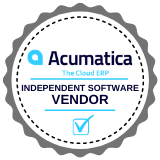Have you received an FDA 483 letter?
If you are in the healthcare industry, chances are you have heard of the cGMP regulations and that the consequences for not adhering to them can be severe. Even though your situation is unique, you can improve your chances of staying compliant before a failing inspection by learning from what others have gone through.
The easiest way to avoid 483 is to make sure you don’t create hazards. And have Cloud ERP software that can maintain documentation and report relevant compliances. We have two, which are the best permanent solution for compliance issues.
- Acumatica Cloud ERP. (BOOK DEMO NOW)
- Acu Process Manufacturing (BOOK DEMO NOW)
In this section, we will look at some of the most common compliance issues.
The pharmaceutical industry faces many unique compliance challenges.
The U.S. Food and Drug Administration (FDA) releases an annual report summarizing observations from inspections of pharmaceutical firms by the industry’s own inspectors, the majority of which have a medical or scientific background (2018 Annual Report). Last year, these inspectors found 3,344 observations in 390 categories (or subcategories) of noncompliance. These observations can be divided into ten major categories that are frequently cited by chemical investigators.
When the data is broken down and analyzed further, the results become even more significant.
More than 400 letters were sent to organizations in the pharmaceutical industry from the Food and Drug Administration (FDA) for violations of administered regulations. Additionally, 322 of these companies had difficulty designing and implementing adequate controls, while 137 had trouble maintaining their products.
Before a pharmaceutical startup or scale-up goes to market, it should be prepared for the possibility that growing pains will occur. For instance, it’s possible that records might not have been reviewed in a timely manner before someone goes out of town. Fortunately, there are steps that can be taken to make the process more manageable during an FDA inspection.
1. One of the most common reasons for non-compliance is a lack of clearly defined procedures and Standard Operating Procedures
It is important to have Standard Operating Procedures (SOPs) in place to clarify how tasks should be done and improve communication, which ultimately makes it easier to complete all required work. However, compliance issues tend to arise when SOPs are not properly enforced.
2. Poor maintenance facilities led to the accident
The FDA identified more than 2 percent of observations in 2018 for inadequate cleaning, sanitizing, and maintenance. To comply with the Code of Federal Regulations, sanitizing and maintaining equipment and utensils appropriately is an essential part of food preparation.
For example, the company should clearly outline methods for cleaning kitchen utensils and properly disposing of waste.
- Cleaning instructions should be clear and easy to follow.
- The group is responsible for the loss of the documents.
- Establishing a cleaning schedule.
- Proper maintenance of equipment ensures the efficient operation of machinery.
- To protect equipment, regular inspections and protective measures should be taken.
Operational logs should be kept up to date and include cleaning activities.
If had already become aware of the compliance, this would happen. Get a Cloud ERP solutions that best has deep documentation and reporting features; Schedule a Call for Acumatica Cloud ERP and Tayana APM.
3. Not using data effectively
Modern technology makes it possible for companies to have real-time access to data. This access enables the organizations to stay abreast of regulatory changes and improve their compliance performance. Unfortunately, many businesses are hampered by outdated technology, which prevents them from utilizing available data.
Integrating data from legacy systems into new systems is a complex process and is challenging. Error-prone manual reporting systems often result. Failing to prioritize compliance needs could result in dire consequences.
4. Unexperienced laboratory assistants
The FDA identified 4% of its observations as concerned with failed laboratory controls in 2018. Instruments such as microscopes, pH meters, and centrifuges are typically used to collect data, which must be monitored and maintained to protect that data from fraud or errors. Raw data can help determine things like instrument calibration, employee compliance, and SOP adherence—all of which lead to fewer problems.
5. Poor communication can have negative consequences
If a Standard Operating Procedure (SOP) is not accompanied by clearly defined roles and responsibilities, then ambiguity may arise. If employees do not understand what is expected of them, they cannot perform their duties and remain compliant with company standards. Accordingly, compliance training should be provided to keep employees prepared for all the unforeseen challenges that they might face while doing their jobs. One way to get employees ready for these challenges is to provide them with a central platform from which they can communicate and collaborate; this may be done by giving them access to a Next-Generation Training Management Software.
6. In a recent survey, participation among departments was surprisingly low
SOPs aren’t created in a linear fashion. You must keep them current to ensure relevancy. It isn’t the responsibility of one department to create and maintain these documents. To ensure that SOPs remain relevant, departments that use them should collaborate to update them as required. People are a company’s greatest asset. They offer ideas and expertise that can be used both in the workplace and to improve the quality of the product.
7. Product review failures
An organization must outline in writing its review and investigation processes to maintain compliance with OSHA’s Bloodborne Pathogens standard (29 CFR 1910.1030).
- Not conducting a thorough review of your log files can make it much more difficult to troubleshoot hardware or software problems.
- It’s essential to review downtime logs, clear out old files, and perform database housekeeping to ensure smooth operation.
- We’ve identified some of the causes of these failures.
- Researchers may not have access to the data that they need in order to complete their experiments.
- Disagreement over the standardization of terms is a serious challenge to the field.
The standards and procedures used by the quality control department should be consistent with those used by the operating department in order to prevent any potential misunderstandings.
It is unacceptable for a pharmaceutical company to receive a 483 letter, which signifies that the business is out of compliance with FDA regulations, even if it has corrected the problem. Failing to correct any quality and operational issues can have long-term consequences that might outweigh the costs of adhering to FDA guidelines.
Lab errors resulting from noncompliance with cGMP are usually the result of oversights rather than willful negligence, such as looking at the wrong document or failing to crosscheck one’s work. Fortunately, a documented quality management system can help you avoid many of these types of errors.
Quality Ze’s eQMS is an easy-to-use, cloud-based enterprise quality management system (eQMS).
CONCLUSION
ACUMATICA’s cloud-based ERP and the TAYANA APM Cloud by ACUMATICA are designed for businesses that need enterprise-level software to grow and compete in an increasingly complex global environment. Join call for a detailed demo.

Vijay comes with a vast experience in ERP and enterprise solutions space with about 20 years of experience in various packaged application like Acumatica, SAP, Orion, Salesforce.com, SugarCRM and, SalesLogix.
















